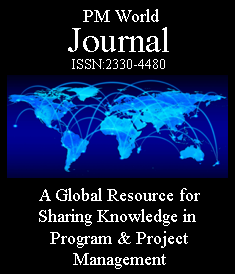A Global Resource for Sharing Knowledge in PPM
Privacy & Cookies: This site uses cookies. By continuing to use this website, you agree to their use.
To find out more, including how to control cookies, see here: Cookie Policy
To find out more, including how to control cookies, see here: Cookie Policy
Copyright © 2012–2025 PM World Inc. – All rights reserved · ISSN 2330-4480









Project management partnering with external bodies
COMMENTARY
By Alan Stretton, PhD (Hon)
Sydney, Australia
INTRODUCTION
Various forms of partnering in the project management context have been practised for a long time – in my personal experience, at least from the early 1960s (as will be further discussed below). Morris 1994:215 reported that “Partnering and teamwork became more accepted and important practices” in project management from the mid-1980s.
Partnering can mean different things to different people. However, Morris 2013:79 describes the most common thread of partnering as follows.
….an emphasis right along the supply chain on achieving mutually agreed objectives, developing trust, implementing joint approaches to work, empowering personnel and stimulating learning.
Morris 2013:79 also elaborated on the widespread use of partnering approaches in project management, as follows.
Partnering has proved immensely popular and has truly revolutionised the basis on which many, though by no means all, projects are engaged.
However, as Morris 2013:180 also says,
“While there is broad agreement about the basic philosophy underpinning partnering – a commitment between firms to cooperate – there are contrasting views about a number of features … contracts, duration of agreements, need for formal teambuilding”.
In practice, there are evidently multitudes of different ways in which partnering arrangements can be, and evidently are, made. There are also likely to be particular forms of such agreements which are reasonably widely used. However, I have not seen any substantial documentation of these in the project management literature.
In the absence of such documentation, I thought it might be useful to outline an actual operational partnering approach developed and used by Civil & Civic (C&C) from the early 1960s – an approach which worked very well for both C&C and its customers for well over three decades. Furthermore, this approach would appear to be transportable to a wide variety of other contexts in which project management supplier organisations form partnering-type arrangements with other external customers or associated entities.
The C&C approach centred around a joint governance arrangement which we called a Project Control Group (PCG) – which is the primary subject of this commentary.
More…
To read entire paper, click here
How to cite this work: Stretton, A. (2024). Commentary on project management partnering with external bodies, PM World Journal, Vol. XIII, Issue XI, December. Available online at https://pmworldlibrary.net/wp-content/uploads/2024/12/pmwj147-Dec2024-Stretton-commentary-on-project-management-partnering.pdf
About the Author
Alan Stretton, PhD
Life Fellow, AIPM (Australia)
Sydney, Australia
Alan Stretton is one of the pioneers of modern project management. In 2006 he retired from a position as Adjunct Professor of Project Management in the Faculty of Design, Architecture and Building at the University of Technology, Sydney (UTS), Australia, which he joined in 1988 to develop and deliver a Master of Project Management program. Prior to joining UTS, Mr. Stretton worked in the building and construction industries in Australia, New Zealand and the USA for some 38 years, which included the project management of construction, R&D, introduction of information and control systems, internal management education programs and organizational change projects. Alan has degrees in Civil Engineering (BE, Tasmania) and Mathematics (MA, Oxford), and an honorary PhD in strategy, programme and project management (ESC, Lille, France). Alan was Chairman of the Standards (PMBOK) Committee of the Project Management Institute (PMI®) from late 1989 to early 1992. He held a similar position with the Australian Institute of Project Management (AIPM), and was elected a Life Fellow of AIPM in 1996. He was a member of the Core Working Group in the development of the Australian National Competency Standards for Project Management. He has published 270+ professional articles and papers. Alan can be contacted at alanailene@bigpond.com.au.
To see more works by Alan Stretton, visit his author showcase in the PM World Library at http://pmworldlibrary.net/authors/alan-stretton/.
Share this:
Like this:
Related